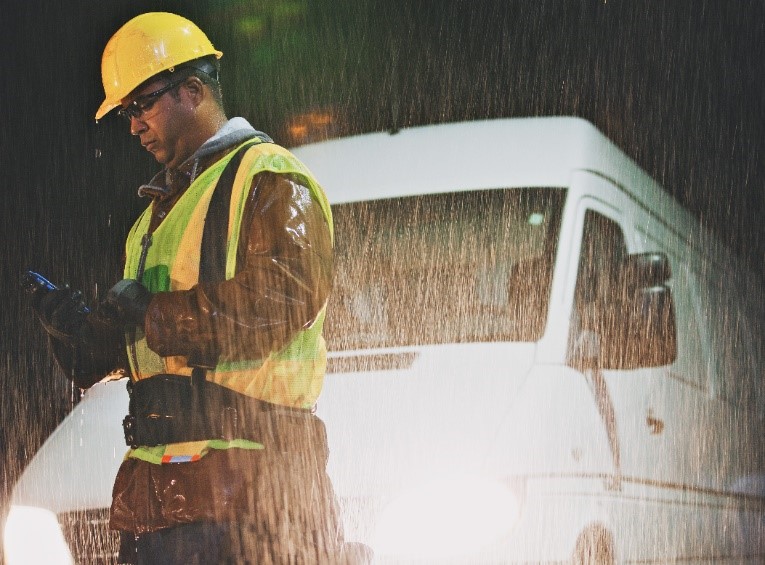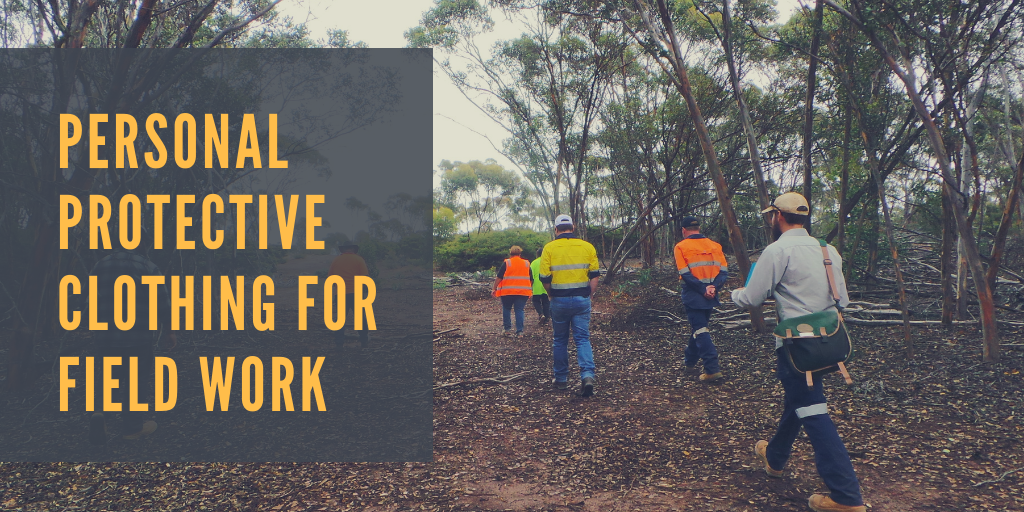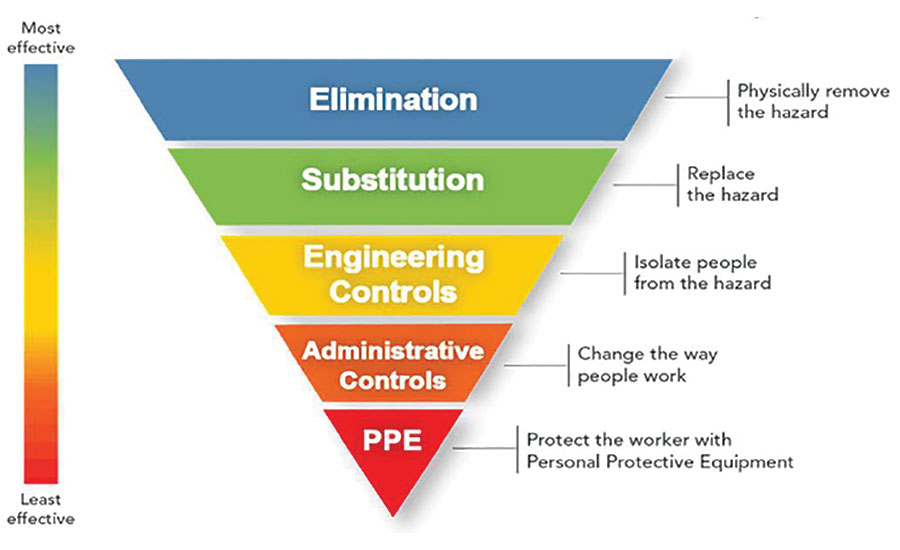When out doing field work, no matter what your speciality, it is paramount to consider what personal protective clothing and equipment (PPE) will be appropriate. Consideration should be given to weather, location and work being undertaken. PPE on the hierarchy of controls is the last form of protection against risk and injury, but this does not make it any less important. PPE refers to anything used or worn to minimise risk to workers’ health and safety. The most common forms of PPE include:
- boots
- ear plugs
- face masks
- gloves
- goggles/glasses
- hard hats
- high visibility clothing
- safety shoes
- sunscreen
Winter or Cold Climate Locations
When preparing to do field work, I find the hot weather and locations tend to be at the forefront of the mind when you think about PPE. However cold, wet or even snowy conditions need to be addressed correctly; otherwise, there can be dire consequences.
 When preparing to work in the field during winter, I would recommend taking the following PPE for use or even precaution on top of your everyday gear:
When preparing to work in the field during winter, I would recommend taking the following PPE for use or even precaution on top of your everyday gear:
Headwear: When working in the wet or the cold it is important to keep your head warm, in terms off PPE this can be a beanie, a wet weather hat or you can also get winter liners for your hard hats that keep workers’ heads, necks and ears warm when wearing them.
Gloves: Depending on the type of work you are completing and the weather conditions, there are a variety of safety gloves that can be used. These range from ski gloves, to prevent frostbite, to work gloves that are insulated from the cold.
Full body suits: staying dry and warm can be at times the hardest aspect of the field work, although for light weather this can usually be combated with thermal clothing, double layering under your standard PPE and a rain jacket, there are other options for harsher conditions. Anti-exposure work suites are completely waterproof and protect against hypothermia in server conditions.
Summer or Hot Climate Locations
PPE to address hot weather is equally important to those of cold climates when considering what to take out into the field I would suggest the following to be at the top of your list:
Sun-cream: UV protection on hot sunny days needs to be taken just as seriously as the heat does, sun-creams and/or zinc needs to be applied up to every 4 hours (depending on the product) throughout the day to prevent burning and reduce the risk of heat stroke.
 Wide Brim Hats: Any field work conducted during summer or in the heat requires wearing a hat and although caps can be used, a wide brim hat if far better at keeping you safe from the sun by keeping the sun off your nose, ears and neck. Wide brims have also be designed to fit hard hats so there is little excuse not to be wearing one.
Wide Brim Hats: Any field work conducted during summer or in the heat requires wearing a hat and although caps can be used, a wide brim hat if far better at keeping you safe from the sun by keeping the sun off your nose, ears and neck. Wide brims have also be designed to fit hard hats so there is little excuse not to be wearing one.
Other Stuff: I know this insight is on safety clothing but in summer there are just a couple of other things you can do to help stay safe, like staying hydrated. Hydralytes are provided by most workplaces for field work to give your body extra go on hot days, hydralytes come as a liquid, powder and even ice blocks. Staying hydrated also means drinking water regularly; relying on thirst alone is not enough on hot days. Keeping hydrated and cool can reduce the risk of heatstroke significantly along with taking more breaks and trying to organise your day to perform the hardest tasks either early in the morning or late in the afternoon if possible.
 While your PPE is your last line of defence, it is still critical to think through the full aspects of your task and your location to ensure you have the right PPE at all times. By doing this you will be making sure you are fit, healthy and safe for another day.
While your PPE is your last line of defence, it is still critical to think through the full aspects of your task and your location to ensure you have the right PPE at all times. By doing this you will be making sure you are fit, healthy and safe for another day.
Your safety is in your hands, think about it, use it and stay safe.
Download PDF: ISPL Insight – Personal Protective Clothing for Field Work
Working in the rain picture sourced from: https://audiometrictesting.net.au/working-in-cold-weather/
Headwear picture sourced from: http://www.gloveguard.com/


